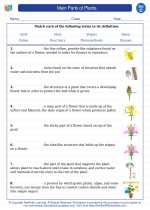Main Parts of Plants
Plants are made up of several main parts that work together to help the plant grow, reproduce, and survive. Understanding the main parts of plants is important for understanding how they function and how they interact with their environment.
Roots
The roots of a plant grow underground and anchor the plant in the soil. They also absorb water and nutrients from the soil, which are essential for the plant's growth and survival. In addition, roots help to store food for the plant and provide support for the stem and leaves.
Stem
The stem of a plant grows above the ground and supports the leaves, flowers, and fruits. It also contains tubes that transport water and nutrients from the roots to the rest of the plant. The stem helps to hold the plant upright and allows it to reach towards the sunlight.
Leaves
Leaves are the primary site of photosynthesis, the process by which plants make their own food using sunlight, water, and carbon dioxide. They also help to regulate the exchange of gases with the atmosphere, releasing oxygen and taking in carbon dioxide. Leaves come in many different shapes and sizes, each adapted to the needs of the plant.
Flowers
Flowers are the reproductive structures of plants. They produce seeds and fruits, which are essential for the continuation of the plant species. Flowers are often brightly colored and fragrant to attract pollinators such as bees, butterflies, and birds.
Fruits
Fruits are the mature ovary of a flowering plant, usually containing seeds. They are often sweet or tasty to attract animals, which eat the fruits and disperse the seeds, helping the plant to reproduce and spread to new areas.
Study Guide
- What is the function of the roots in a plant?
- Explain the process of photosynthesis and the role of leaves in this process.
- How are flowers essential for the reproduction of plants?
- Describe the importance of fruits in the life cycle of a plant.
- Draw and label a diagram showing the main parts of a plant.
Understanding the main parts of plants and their functions is essential for understanding the biology and ecology of plants. It also helps us appreciate the diverse and essential roles that plants play in our environment and our lives.
[Main Parts Of Plants] Related Worksheets and Study Guides:
.◂Science Worksheets and Study Guides Third Grade. Main Parts of Plants
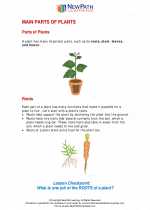
 Activity Lesson
Activity Lesson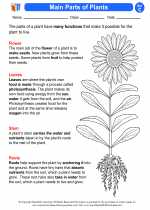
 Worksheet/Answer key
Worksheet/Answer key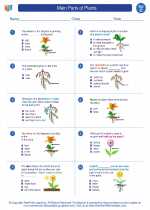
 Worksheet/Answer key
Worksheet/Answer key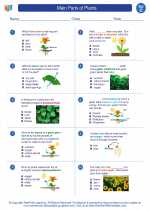
 Worksheet/Answer key
Worksheet/Answer key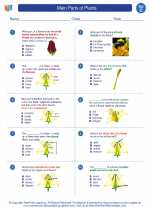
 Worksheet/Answer key
Worksheet/Answer key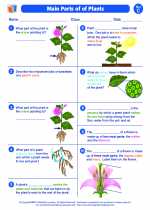
 Worksheet/Answer key
Worksheet/Answer key
 Vocabulary/Answer key
Vocabulary/Answer key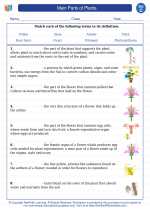
 Vocabulary/Answer key
Vocabulary/Answer key